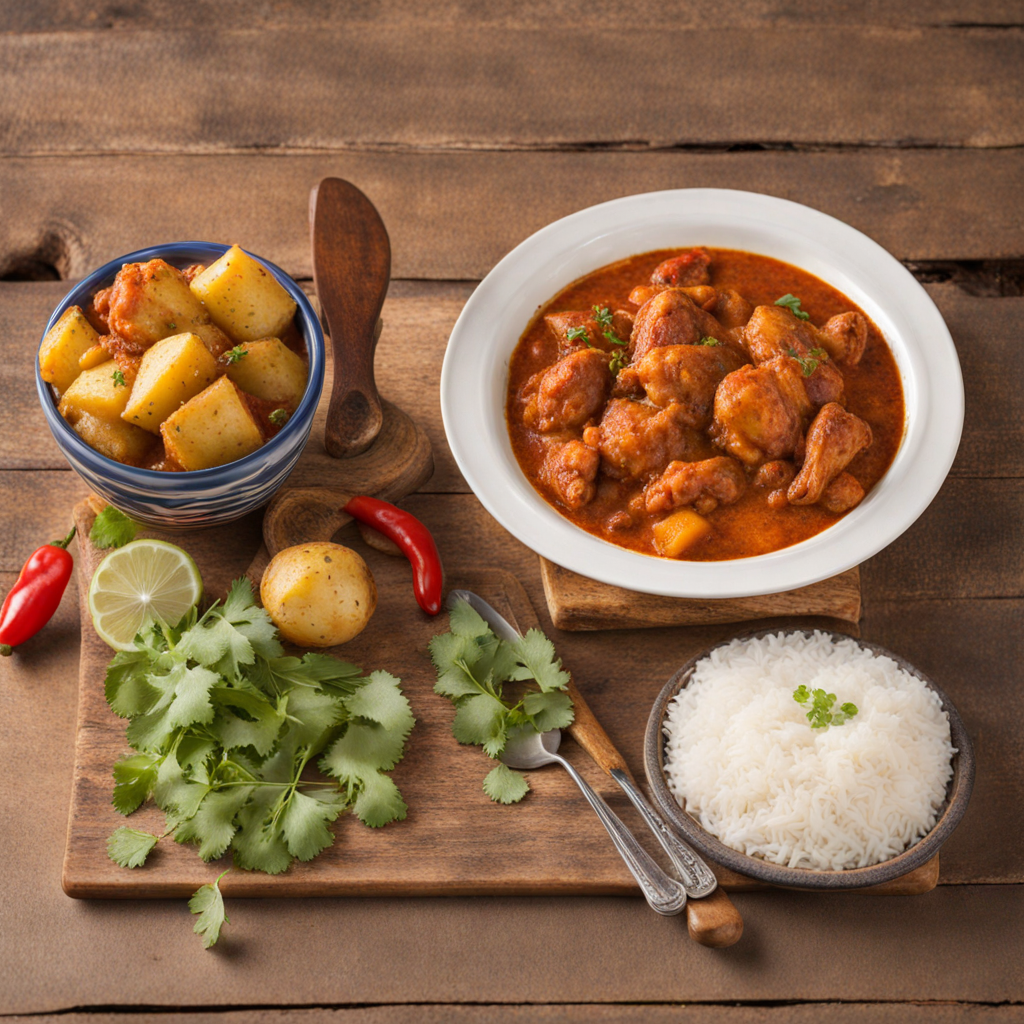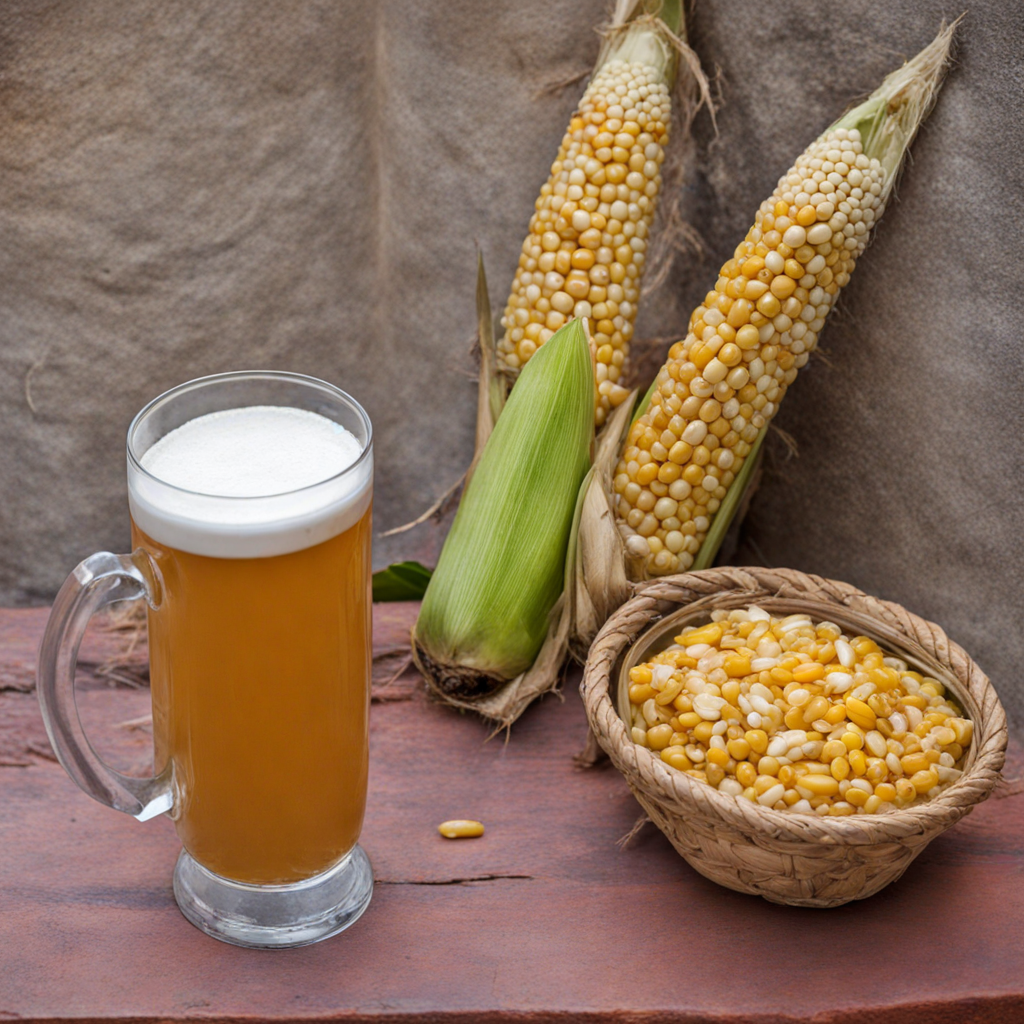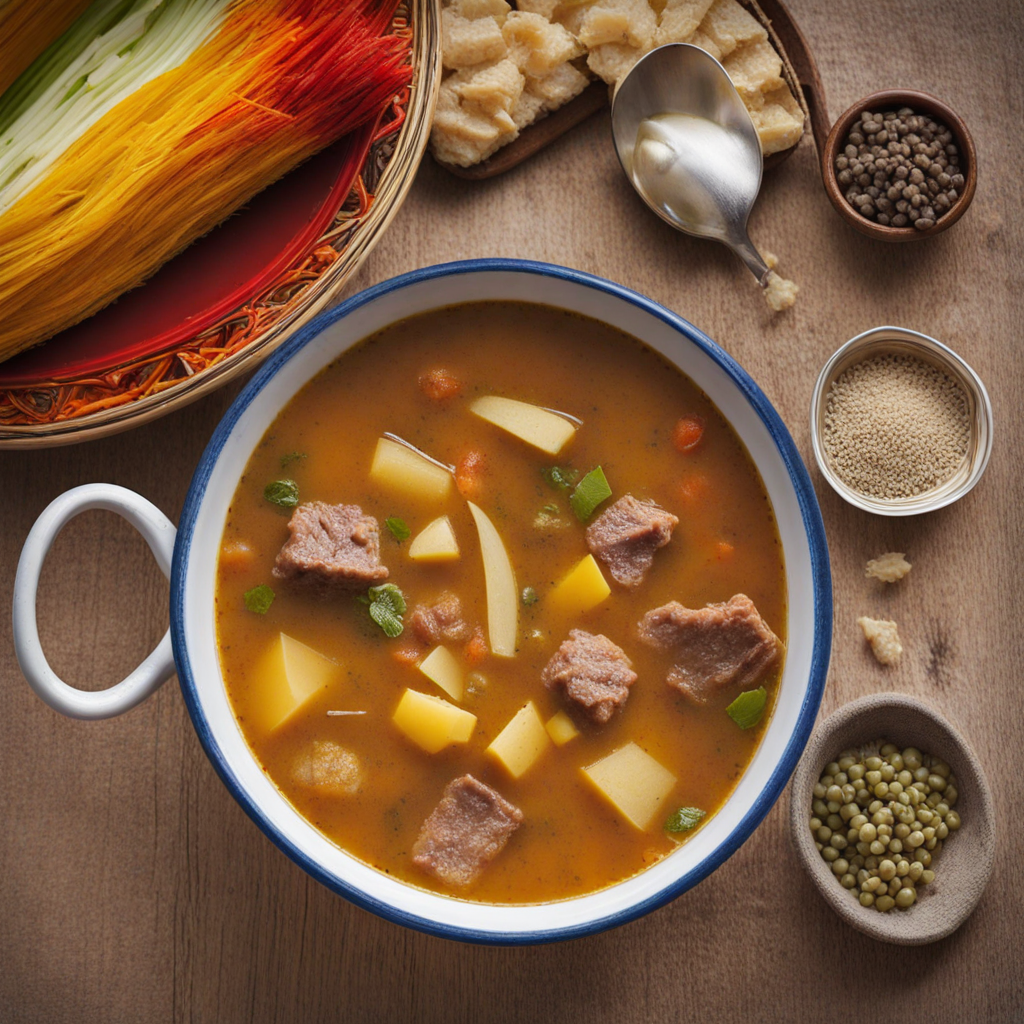Picante de Pollo
Picante de Pollo is a vibrant Bolivian dish that showcases the rich culinary heritage of the Andes. This hearty meal features tender chicken pieces simmered in a robust and spicy sauce made from a blend of traditional ingredients, including aji amarillo (yellow chili peppers), garlic, and onions. The aji amarillo lends a distinct heat and a beautiful golden hue to the dish, while the combination of spices creates layers of flavor that make each bite an exciting experience. The dish is often served with a side of fluffy white rice, which perfectly balances the spiciness of the sauce and allows you to savor every drop. The preparation of Picante de Pollo involves marinating the chicken to infuse it with flavor before it is cooked slowly to ensure it remains juicy and succulent. The addition of potatoes, which soak up the sauce, adds a comforting element to the dish. Each region in Bolivia may have its own twist on the recipe, incorporating local ingredients and unique spices, which contributes to the dish's versatility. Some variations might even include fresh herbs like cilantro or parsley, providing a fresh contrast to the warmth of the spices. To complete the experience, Picante de Pollo is often garnished with boiled eggs and olives, adding both texture and a pop of color. The combination of flavors—from the spicy and savory chicken to the creamy potatoes—creates a symphony of taste that is both satisfying and memorable. This dish embodies the spirit of Bolivian cuisine, celebrating its indigenous roots and the warmth of its culture, making it a must-try for anyone looking to explore new culinary horizons.
How It Became This Dish
The History of Picante de Pollo: A Bolivian Culinary Treasure #### Origins Picante de Pollo, a savory and spicy chicken dish, is deeply rooted in Bolivian culture, particularly prevalent in the highland regions. Its origins trace back to the indigenous peoples who inhabited the Andean mountains long before the arrival of Spanish colonizers. The combination of chicken with local spices and ingredients reflects a blend of indigenous culinary practices and the influences brought by European settlers. The dish is often associated with the Aymara and Quechua peoples, who cultivated a diverse range of crops in the fertile altiplano. The use of spices like aji (a type of chili pepper) and other native herbs like huacatay (black mint) not only gives the dish its characteristic heat but also signifies the region's rich agricultural heritage. This melding of pre-Columbian and colonial influences laid the groundwork for a dish that is now a staple in Bolivian cuisine. #### Cultural Significance Picante de Pollo is more than just food; it encapsulates the spirit of Bolivian hospitality and community. It is often served during social and family gatherings, celebrations, and festivals. The dish is particularly popular during the Day of the Dead (Día de los Muertos) celebrations, where families come together to honor their ancestors. The act of preparing and sharing Picante de Pollo reinforces familial bonds and fosters a sense of belonging among the community. In Bolivian culture, food serves as a means of storytelling and tradition. Each family may have its own unique recipe, passed down through generations, reflecting the nuances of regional variations and personal touches. The dish embodies the essence of "sabor boliviano" (Bolivian flavor), showcasing local ingredients and culinary techniques that are emblematic of the country's diverse cultural landscape. #### Development Over Time As Bolivia underwent significant social, political, and economic changes throughout the 19th and 20th centuries, so too did its culinary practices. The introduction of new ingredients, the migration of people, and the globalization of food culture have all contributed to the evolution of Picante de Pollo. In the early 20th century, urbanization began to alter traditional food practices. As people moved to cities like La Paz and Cochabamba in search of work, they brought their culinary traditions with them. Picante de Pollo evolved from a rural dish enjoyed in villages to a beloved urban staple. Street vendors and local markets began to offer their own versions, making it accessible to a broader audience. The dish became a symbol of Bolivian identity, representing the blend of indigenous and mestizo cultures. The late 20th century saw a resurgence of interest in traditional Bolivian cuisine, spurred by a growing movement to celebrate and preserve indigenous foodways. Chefs and home cooks alike began to experiment with traditional recipes, incorporating local ingredients while also drawing inspiration from international culinary trends. This revival led to the reinvention of Picante de Pollo, with modern interpretations appearing in restaurants and culinary festivals across the country. #### Ingredients and Preparation Picante de Pollo is characterized by its rich, flavorful sauce, which is typically made with a base of aji rojo (red chili), onions, garlic, and various spices. The chicken is simmered in this aromatic mixture, allowing the flavors to meld together beautifully. Some variations may include potatoes, peas, or other vegetables, adding texture and nutritional value to the dish. The preparation of Picante de Pollo often involves several key steps. First, the chicken is marinated to enhance its flavor. Then, it is seared to develop a golden crust before being simmered in the sauce. The dish is traditionally served with rice or potatoes, creating a hearty and satisfying meal. The use of local ingredients, such as fresh vegetables and herbs, signifies the connection to Bolivian agricultural practices and the importance of seasonal eating. #### Regional Variations Like many traditional dishes, Picante de Pollo has spawned numerous regional variations across Bolivia. In the Altiplano, where the climate is cooler and the agricultural practices differ, the dish may incorporate ingredients such as quinoa or chuño (freeze-dried potatoes). In the lowland regions, where tropical ingredients abound, you might find versions that include plantains or tropical spices, showcasing the country's diverse ecology and agricultural practices. In restaurant settings, chefs have taken liberties with the dish, experimenting with fusion concepts that blend international flavors while retaining the essence of Picante de Pollo. The dish has found its way onto the menus of high-end restaurants in major cities, where it is presented with a contemporary twist, elevating it to new culinary heights. #### Conclusion Picante de Pollo is a dish that encapsulates the rich tapestry of Bolivian history and culture. It is a testament to the enduring legacy of indigenous culinary practices, the adaptability of traditional recipes, and the importance of food in building community and identity. As the world becomes increasingly globalized, Picante de Pollo stands as a proud representation of Bolivia's unique culinary heritage, bridging the gap between the past and the present. Today, it remains a beloved dish, enjoyed by Bolivians and food enthusiasts alike, and is a reminder of the power of food to tell stories, preserve traditions, and foster connections among people. Whether enjoyed at a family gathering or at a bustling street stall, Picante de Pollo continues to evoke a sense of pride and belonging in the hearts of those who partake in its rich flavors and history.
You may like
Discover local flavors from Bolivia







